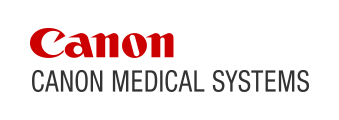Deep Learning Reconstruction Getting to the Heart of Stroke Prevention
Cardio-embolic disease is responsible for 30% of acute ischemic stroke. In our recent study among patients with confirmed ischemia, 11% were found to have thrombus present in the left atrial appendage1. This indicates that patients with left atrial appendage thrombus are at a high risk of stroke recurrence. To improve the prognosis of these patients we implemented a volumetric cardiac CTA scan as part of the initial stroke imaging protocol to identify patients who could benefit from early initiation of anticoagulation therapy. Our Aquilion ONE area detector CT with Deep Learning Reconstruction enables a fast, low-dose (1.5mSv1) cardiac CT scan to be acquired together with our acute stroke imaging protocol without any increase in contrast media.
Patient history
A 82-year-old patient with no prior medical history presented with severe right hemiplegia, severe aphasia, and dysarthria. The NIH Stroke Scale was 16. The acute stroke imaging protocol with cardiac CTA was performed immediately after arrival at the emergency department.
Results

A left middle cerebral artery occlusion was shown involving the M1 segment resulting in a large area of ischemia in the left fronto-parietal lobe.
A large intra-cardiac thrombus was seen occupying the left atrial appendage (LAA). The patient was initially treated with rt-PA and underwent a successful mechanical thrombectomy after careful assessment by the acute stroke treatment team. A brain CT performed 24 hours post intervention showed no intra-cranial hemorrhage and the vascular neurology team decided to begin anticoagulation therapy to reduce the risk of secondary stroke from the LAA thrombus.
A large intra-cardiac thrombus was seen occupying the left atrial appendage (LAA). The patient was initially treated with rt-PA and underwent a successful mechanical thrombectomy after careful assessment by the acute stroke treatment team. A brain CT performed 24 hours post intervention showed no intra-cranial hemorrhage and the vascular neurology team decided to begin anticoagulation therapy to reduce the risk of secondary stroke from the LAA thrombus.
Technology
The acute stroke imaging protocol routinely used on the Aquilion ONE / GENESIS Edition at the University Hospital of Dijon in France consists of the following four steps2:
| Scan | Contrast | Remark |
|---|---|---|
| ❶Non-contrast brain CT | No | |
| ❷4D brain perfusion CT | 40 ml @ 5ml/s (contrast)
40 ml @ 5 ml/s (saline) |
This one-minute scan provides whole brain perfusion and 4D CT DSA of the intracranial circulation |
| ❸ cardiac CTA + cardiac CTA | 50 ml @ 5ml/s (contrast)
60 ml @ 3.5ml/s (50% contrast:50% saline) 50 ml @ 3.5 ml/s (saline) |
Cranio-caudal helical carotid CT + volumetric cardiac CTA (ECG-gated) |
| ❹ Post-contrast brain CT | No |
Note: The patient is positioned head first, supine, and all scans are performed with the arms at the side.

Conclusion
This comprehensive protocol is made possible with the Aquilion ONE area detector CT to perform a whole brain perfusion, carotid CTA, and cardiac CTA scan in just 5 mins and two contrast injections. Advanced intelligent Clear-IQ Engine (AiCE) enables excellent image quality in cardiac scans even with the arms at the side to detect LAA thrombus resulting in the patient being put on early anticoagulation therapy to prevent a stroke recurrence.

Dr. Angélique Bernard
University Hospital
François-Mitterand,
Dijon, France.

Prof. Frédéric Ricolfi
University Hospital
François-Mitterand,
Dijon, France.
References
1 Bernard A, Leclercq T, Comby PO, Duloquin G, Ricolfi F, Béjot Y, Guenancia C. High rate of cardiac thrombus diagnosed by adding cardiac imaging in acute stroke computed tomography protocol. Int J Stroke. 2020 Nov 3:1747493020967623. doi: 10.1177/1747493020967623.
2 Bernard A, Comby PO, Lemogne B, Haioun K, Ricolfi F, Chevallier O, Loffroy R. Deep learning reconstruction versus iterative reconstruction for cardiac CT angiography in a stroke imaging protocol: reduced radiation dose and improved image quality. Quant Imaging Med Surg. 2021 Jan;11(1):392-401. doi: 10.21037/qims-20-626.
1 Bernard A, Leclercq T, Comby PO, Duloquin G, Ricolfi F, Béjot Y, Guenancia C. High rate of cardiac thrombus diagnosed by adding cardiac imaging in acute stroke computed tomography protocol. Int J Stroke. 2020 Nov 3:1747493020967623. doi: 10.1177/1747493020967623.
2 Bernard A, Comby PO, Lemogne B, Haioun K, Ricolfi F, Chevallier O, Loffroy R. Deep learning reconstruction versus iterative reconstruction for cardiac CT angiography in a stroke imaging protocol: reduced radiation dose and improved image quality. Quant Imaging Med Surg. 2021 Jan;11(1):392-401. doi: 10.21037/qims-20-626.


